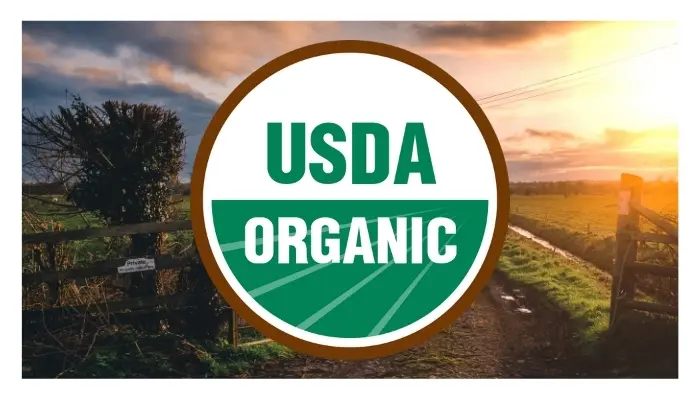Most of us end up paying higher prices for organically-grown foods compared to conventionally grown counterparts, because they are frequently advocated as being safer, healthier and better for the environment. But, do they live up to the claims of being healthier and safer than traditionally-grown foods?
Organic foods typically cost 10% – 50% more than traditionally-grown food. Do these higher prices, due to labor intensity, increased cost for certification, and smaller yield, justify the health benefits? Let us examine the facts to avoid the dilemma of what to choose in the produce aisles.

“Organically-grown” refers to foods that are grown and processed without the use of pesticides and chemical fertilizers. These are grown using natural matter, such as aged manure, compost for fertilizer, and biologic methods for pest control. Livestock poultry are raised on organically-grown feed without antibiotics or hormones, and with access to the outdoors.
Various labels on organic foods
You must have seen labels on foods that say, “Organic,” “Made with Organic Ingredients,” “100% Organic” and “USDA (US department of agriculture) Organic”. The U.S. Department of Agriculture (USDA) has strict guidelines on how foods are to be properly described on the product labels.

All organic foods are required to meet the U.S. government standards for growing, handling and processing as established by the USDA. It is certified by the USDA if standards are met, enabling the producer to use an official USDA seal. Foods must consist of at least 95 percent certified organically-processed ingredients, excluding salt and water, to be labeled “USDA Organic”. The remaining 5% can be non-organic if they are included are listed on the USDA National List.
To be labeled as “100% Organic”, all ingredients must be certified as organically-produced and processed, excluding water and salt.
The USDA makes an exception for producers who sell less than $5,000 a year of organic food. They do not need to go through the strict certification process. Producers must follow USDA’s guidelines for organic food production to label their products as “organic.”
“Made with Organic Ingredients” labeling can be used if the multi-ingredient product has at least 70% of its ingredients as certified organic. The ingredients that are organic must be identified on the label. These products are not allowed to use the USDA organic seal.

Difference between organic and conventionally grown foods
| Organic food | Conventionally-grown foods | |
|---|---|---|
| Pesticide exposure | No pesticides present May contain small amounts of synthetic pesticide residue from cross contamination by wind and water |
Careful and judicious use of pesticides |
| Antibiotics | No use of antibiotics, which may reduce risk of diseases attributed to organisms that are resistant to multiple antibiotics | Routine use of antibiotics in livestock production, meats cause higher occurrences of bacteria resistance to antibiotic treatment |
| Omega-3 fatty acids | Primary use of grass and alfalfa for cattle grazing, cause higher levels of omega-3 fatty acids in organic meats, dairy and eggs. Omega-3 fatty acids keep the heart, body metabolism and overall immune system healthy | Have lower levels of omega-3 fatty acids compared to organically-raised cattle, which result in lower levels in meats, dairy and eggs |
| Increase in some nutrients | Small to moderate increase in some nutrients Significant increase in certain types of flavonoids, which have antioxidant properties |
|
| Toxic metal – Cadmium (found in soils and absorbed by plants) | Lower levels in organic grains | Higher levels in conventionally-grown grains |
Organic foods are different from foods that are labeled “Natural” or “Hormone-free.” Natural foods do not contain preservatives, flavors or artificial colors. “Hormone-free” foods do not contain hormones or indicate producers followed all the required guidelines for organic certification.

The major downside to organic foods is the cost. Whether you buy organic or conventional foods, there are some measures you need to take to reduce any exposure to bacteria and pesticides.
- Eat a variety of balanced, mixed nutrients to lessen contamination from any one source.
- Buy the freshest foods, because they contain the highest nutrient content.
- Wash fruits and vegetables thoroughly under running water.
- Discard the outer leaves of leafy vegetables. Wash and peel fruits and vegetables before eating. While this removes contaminants, some nutrients may be lost.
- Select apple juice and cider products that are pasteurized to reduce the risk of foodborne illnesses.
- Pesticide residues are concentrated in fat. Trim the fat from meat, and remove skin from poultry and fish.
- Cook meat thoroughly, store it at the appropriate temperatures, and keep kitchen surfaces and tools clean to prevent food-related illnesses.
“The very fact that we are having a national conversation about what we should eat, that we are struggling with the question about what the best diet is, is symptomatic of how far we have strayed from the natural conditions that gave rise to our species, from simple act of eating, real whole, fresh food.”
– Mark Hyman


